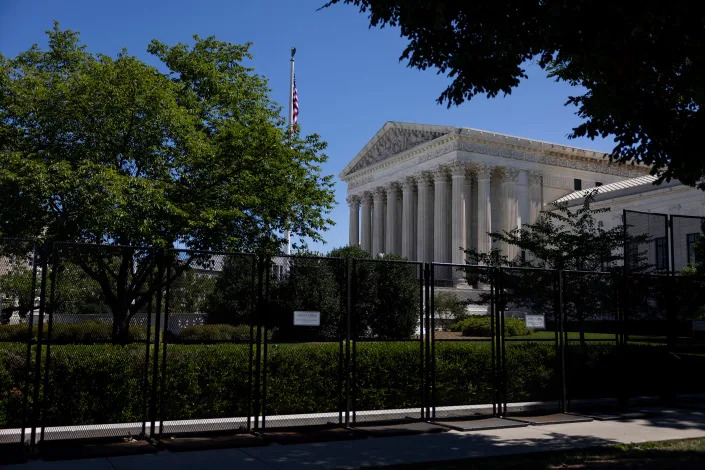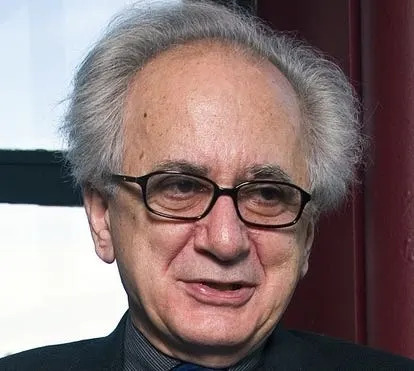USA Today
What about my right to live without violence? Supreme Court decisions on guns harm survivors.
Richard Alba – December 27, 2022
I have lived since the age of 2 with the damage inflicted by a gun death.
My father was killed while serving in the U.S. military in late 1945 by another soldier test firing his souvenir Luger in a barracks. I can still feel the powerful reverberations of that shot. It immediately threw the life of what remained of my family onto a much more difficult trajectory – less upwardly mobile, much less happy – than it had been on before.
My mother, though she remarried for a time and bore additional children, never knew sustained contentment and took her own life at the age of 60, three decades later. I struggled through an emotionally fraught childhood into a prickly young adulthood. Only years of psychological therapy and finally finding love in my 30s made it possible for me to break with my anger and melancholy.

This personal background gives me an unusually intense interest in the current rash of American mass shootings and its relation to our Constitution, as interpreted by a conservative Supreme Court. According to the Gun Violence Archive, there were 609 mass shootings (those with four or more victims) by Thanksgiving this year, though last year’s record of 690 looks safe.
The gun violence in America far exceeds that in any other high-income country not at war – for example, the rate of gun homicide here is more than 10 times that in France. Armed attacks in schools have become so common that elementary school children must train for the intrusion of an “active shooter.”
There’s a simple explanation for this level of violence: The American rate of gun ownership is exceptional because of the Second Amendment. That part of the Bill of Rights has made it difficult for government to limit gun ownership and even now to restrict concealed arms in public places.
Right to guns vs. right to live free of gun violence
Recent Supreme Court decisions have torqued that difficulty. The District of Columbia v. Heller decision of 2008 established for the first time an individual right to gun ownership and invalidated a widespread previous understanding that the Second Amendment referred to a collective “right of the people,” organized in a “well regulated Militia.”
Justice Antonin Scalia’s majority opinion offers a tutorial on the conservative doctrine of originalism, as he strove to demonstrate the general acceptance in the 18th and 19th centuries of the principle that guns are necessary for individual self-defense.
But there is a glaring lack of balance in the opinion because Scalia, while admitting limits on Second Amendment rights in the abstract, provides no systematic reasoning or principles that might help us establish where the individual’s right to gun ownership ends and the right of the community to live without the constant threat of gun violence begins.

The majority opinion in the newest decision, New York State Rifle & Pistol Association v. Bruen this June, which tossed out New York’s century-old law restricting gun carrying outside the home, wrenched that lack of balance to a new extreme. Written by Justice Clarence Thomas, the opinion equates Second Amendment rights with other constitutional rights such as that of free speech.
It then opines, “The exercise of other constitutional rights does not require individuals to demonstrate to government officers some special need (as the New York law did).” Ergo, Second Amendment rights should not require it, either.
One would hope that the average law student could spot the flaw in this reasoning: For when the right of speech is abused, an injured party can seek redress in the courts. But what redress is open to the person shot dead or grievously wounded by a gunman?
This distinction makes evident why government and the public have compelling interests in the exercise of Second Amendment rights that they do not for other rights.
It matters that guns are more deadly
Gun rights pose a severe test for the idea of originalism because of the enormous technological advance of weapons since the 18th century. Today’s semi-automatic firearms bear almost no resemblance to the muskets and rifles of the 18th century, which had to be reloaded after a single shot. Can originalism logically justify the right to own a weapon that could not be conceived when the Constitution was written?
In a recent speech, Justice Samuel Alito declared that the court’s decision extending the anti-discrimination provision in civil rights legislation to sexual orientation and gender was wrongly decided. His originalist reasoning: “It is inconceivable that either Congress or voters in 1964 understood discrimination because of sex to mean discrimination because of sexual orientation, much less gender identity.”
Respect for Marriage Act: It’s a triumph for families, freedom – and American activism
Who’s the bigot? ‘Inclusive’ restaurant turns away Christian group because of its beliefs.
It seems highly doubtful that the Second Amendment as now understood can survive the Alito test. Can anyone seriously maintain that the Founders, whose knowledge of guns was limited to single-shot weapons, would have sanctioned constitutionally the widespread keeping and bearing of modern arms of war, which can tear the human body apart in seconds? Can anyone really believe that they would have intended such sanction for these weapons if given the knowledge that they are being used regularly to massacre American schoolchildren?
When is a society civilized?
The damage of gun violence is a spreading blight on American society. It affects not only the victims themselves but also their survivors, who must live with emotional loss and psychic trauma indefinitely.
In refusing to consider how to balance the Second Amendment’s right to gun ownership with the right of other citizens to live without the constant threat posed by ubiquitous weaponry, the court is contributing to the deterioration of the United States as a civilized society.
In common understanding, a society is civilized when citizens can go unarmed about their daily business without fear of violence. Today, pedestrians in many parts of the United States have to fear that the person walking by may be armed, and that the police can do nothing to protect them until he or she pulls out the weapon and starts shooting.
And then it is too late, as so many recent mass shootings instruct us.

Richard Alba is a distinguished professor of sociology emeritus at The Graduate Center, CUNY.
